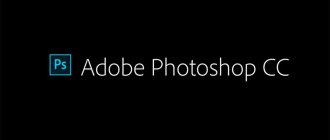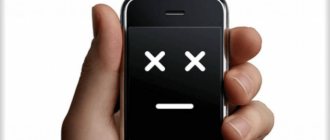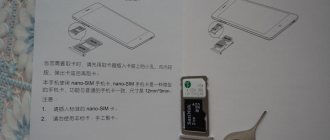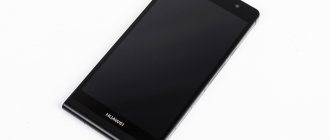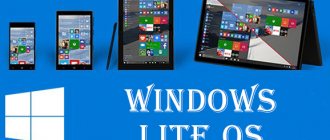Bookmark Best Foldable Smartphones – After years of advancements in display technology, foldable smartphones are finally a reality and now we can get our hands on them. Many smartphone makers have come up with their own take on foldable phones, and frankly, the devices look straight out of the future.
Best Foldable Smartphones
So, in this article, we have compiled a list of 12 best foldable smartphones that you can either buy now or in the near future. We already have a selection of foldable smartphones, so you don't have to wait any longer. If you are one of those tech enthusiasts who want a foldable phone, here are the best foldable phones available in the market.
What is a flexible display
A flexible display has mechanical and functional features in which it not only displays complete, high-quality visual information, but is also able to change its shape.
The biggest problem faced by manufacturers of equipment and components is glass. The fact is that the 2 latest technological innovations in this area - OLED and AMOLED - will probably be replaced by a new product
Here are the types of screens that currently exist:
- LCD is the earliest and by now outdated technology that requires backlighting in order for the screen to glow.
- The operating principle of OLED is based on the use of light-emitting diodes and encapsulated glass. The top layer is made of a polarizer.
- AMOLED technology uses organic compounds that produce their own light. It does not use backlighting (like an LCD), which makes it possible to significantly simplify the production technology and make the screen flatter.
- FAMOLED technology assumes that the following layers are combined for the screen: a lower one made of TFT film, then organic-based diodes that produce light, that is, capable of self-luminescence, on top of them is a flexible encapsulated film made of several layers of polyethylene, replacing glass, and on top of it - polarizing layer to create a certain optical effect.
It was the replacement of glass with several layers of polyethylene film that allowed the screen of a smartphone, tablet or other equipment that uses the element to bend without affecting its own performance.
Huawei Mate X (2019/2020)
Another major player in the smartphone market, meanwhile, also wants to be one of the first to present a flexible device. It was first announced in February. Sales were planned to begin in June. Then, in light of the problems with the Galaxy Fold, the date was postponed to September. Then in November and only in China. The start of sales in other countries has not yet been announced. Despite these delays, we could see many prototypes of the Huawei smartphone. This gives a detailed idea of what it is. Unlike the Samsung device, the Huawei smartphone turns outward. This is a rather elegant device with a thin body, inside which hides a fast Kirin 980 processor and 512 GB of memory.
Judging by the available information, this may be the highest quality device of all currently existing flexible smartphones in 2020.
Video review of the flexible smartphone Huawei Mate X: The only problem for Huawei is that it currently does not have access to Google services. This means no apps like Gmail or the Play Store. The trade war between the US and China is to blame. Given this and the astronomical price of $2,600, it's hard to expect much sales.
If you are interested in Google services for improving education, then the information is here.
Pros and cons of flexible displays
When creating bendable display technologies, manufacturers did not strive to improve picture quality. This happened a little earlier, when LED technology was used - an AMOLED screen, around 2013. Since then, gadget screens began to display images with full HD resolution. The pixel size has decreased so much that it can now only be seen under a microscope. That is why the picture quality is now reaching its maximum. And it seems that there would be no point in changing technologies further, but manufacturers began to build on other negative qualities of glass-covered monitors. First of all, this is fragility and relative size. But the thickness of the device is still an area of activity for which all manufacturers are fighting.
Now let's look at the advantages and disadvantages of bending screens in the form of a table:
| pros | Minuses |
| Reduced weight | Short service life |
| Thinner screen | The appearance of creases at bends |
| There is no risk of glass cracking when the gadget falls | Inability to reliably protect LED elements from moisture and other external negative factors |
| Compactness when folded, especially for large-sized equipment - televisions | Difficulty in some cases to achieve adequate software operation |
| Light weight |
What's the benefit?
In theory, a flexible device is convenient because with a slight movement of the hand you can turn your smartphone into a tablet. It seems like it turns out interesting, but in practice it is a rather thick sandwich, far from the fantasy of a thin and light device. Let's say the dimensions can be survived.
But what about the software? Now this will be a headache: application developers are extremely slow to update programs. Moreover, as practice shows, adapting software for strange devices will take a long time and slowly, plus new versions of operating systems with development and testing. So it turns out that you are buying “the thing in itself.”
Yes, all the usual Google services will work, maps and mail are always at hand, but what about using the capabilities of a flexible device to the fullest? For now, this is all a big question, I’m just too lazy to rework the program to suit the needs of a handful of exotic format smartphone users.
Again, if you need a large screen, then for $2000 you can buy a top-end smartphone and an equally top-end tablet. Although it's too boring, I understand.
What smartphones with flexible screens exist?
Today, renderings of images of smartphones that use a flexible screen have appeared. Manufacturers have the opportunity to expand the visual space. The devices operate on the principle of a folding design - when the gadget is unfolded like a book, the screen area increases exactly 2 times the standard size of the phone. And this is already reality.
Huawei Mate X
The Huawei smartphone folds with the screen facing out rather than inward. This allows you to increase its functionality and ease of daily use. This approach made it possible to reduce the thickness of the body.
If we talk about functionality, the corporation provided the gadget with 10 GB of RAM and 512 GB of internal memory for storing information. The main camera has 4 lenses, the front camera has 2.
Samsung Galaxy Fold
Samsung Galaxy Fold has an inward folding display. Thanks to the use of this technology, Samsung with a bending screen reaches a screen size of 7.3", in addition, the innovative polymer material allows the monitor to bend quite effectively while maintaining all functionality. Although the manufacturers themselves warn that the fold that appears in the middle of the screen is a characteristic and not a defect. But it is unlikely that users who will purchase a flexible smartphone from Samsung in the future will like the room in the middle of the screen.
It is worth noting that another South Korean corporation, LG, is also developing flexible screens.
Apple Developments
Back in 2020, the US Patent Office registered Apple's patent for a foldable screen. In this way, the company is trying to join the race to develop modern gadgets, although this is difficult, because the Americans joined the competition not so long ago. Lenovo and Samsung began development in this area much earlier. Therefore, Apple's bendable smartphone should capture the imagination of consumers, at least that's what the manufacturer plans. True, so far only activities are being patented, and there is no prototyping and production of finished products.
But Apple plans to work outside the box. Apple devices will presumably bend in two directions at once - in book format and in notepad format.
Lenovo Flexible Displays
Lenovo is launching the production of various electronic devices with flexible screens. These include smartphones that bend in an arc, and tablets that turn their screens outward. They were demonstrated in 2016 at an exhibition in California.
A distinctive feature of Lenovo models is that, along with a bending screen, the company has made the board and battery of the smartphone and tablet completely bendable.
But serial production is not yet possible due to defects that occur after a certain number of bends. The device ceases to function fully or completely fails. Therefore, designers and technologists continue to work to increase the number of operating modes to 70,000 bends. The work is still ongoing and the corporation cannot say when it will be completed.
Sony Xperia Flex
Sony Corporation has gone even further in the development of bendable smartphones. Sony Xperia Flex will be able to surprise even advanced users: in addition to the flexibility of the product, technologists and designers have introduced 3 screen operation modes:
- Ordinary.
- Translucent.
- Transparent.
Moreover, the gadget will have 2 screens, and each of them is capable of operating in one of the specified modes. The operating principle of such a device is not clear. Engineers are now actively working on how to capture images located behind the back panel of the smartphone and display it on the front. This is the only way to achieve the effect of complete transparency. True, Sony does not explain how functional this is and what it is needed for. But given the fact that flexible batteries already exist at the moment, technologists and inventors will most likely be able to achieve such an effect in the near future.
Updated Motorola Razr
Motorola is also trying to keep up with the competition and breathe new life into its Razr model. Engineers are trying to develop a device in which the screen will bend completely in the transverse direction. Moreover, it will be directed inward. While the front panel will display basic data about the incoming call, time and date. In principle, this is a standard solution for those folding phones that existed before.
A distinctive feature of Motorola Corporation is its patented invention - self-healing glass. But to what extent there are currently production capabilities to implement this technology and bring it to life is still unknown.
Sharp Bendable Gadgets
Sharp is developing 2 models at once. One folds into a book format, the other into a notebook. But in both cases, the principle by which the cameras will work is not clear.
Companies don't stop surprising their users here. It is planned to release another version of the phone, which is a bracelet.
Budget flexible smartphone TCL
This smartphone with a flexible screen will be in the budget group. But despite this, the planned cost will be just under $1,000. And it is planned to produce such devices as early as 2020. The company stated that it was able to solve many problems associated with the mechanics of the case. She is working in the field of software, adjusting it to the changed mechanics.
Rolling screens BOE
The Chinese company BOE specializes in the production of screens. And what she is actively working on now are new products that can curl inward. Thus, the 7-inch screen can be expanded to 12.3 inches. The only point that the developers have not yet been able to implement is touch input of information directly from the screen.
Let's come to the end
Over the past twenty years, engineers have been working on flexible display technologies. Researchers are trying to combine polymer and metal foils together with a thin film transistor (TFT). The goal is to produce a thin, flexible and integral panel with the protective properties of glass.
A flexible display will offer many advantages over display technologies currently in use. Major factors such as reduced weight and thickness, improved strength and non-linear shape will lead to the positive aspects of a flexible display. The potential applications of such technologies are so diverse that many companies actively invest in research to achieve the ideal product.
Imagine any product that can use a flexible display. Smartphones, iPods, other personal digital assistants, computers and e-readers can all benefit from flexible displays. Imagine the boom that will happen when flexible displays hit the mainstream. A TV with a flexible display and a thin body can be rolled up into a tube and taken with you anywhere. Reusable electronic “newspapers” that can show the user the latest and greatest news. Electronic wallpaper that can depict pictures or views of the world. The possibilities for future use of flexible displays are endless.
Some researchers are focusing on organic liquid technology. For example, organic light-emitting diodes (OLED) for future full-color flexible displays. LEDs are self-luminous and do not require backlights, diffusers or polarizers to operate. It also reduces the size and weight of the display, offers a wide viewing angle and low power consumption. OLED displays are not as bright as some other displays, but research to improve the technology continues to this day.
Like all new technologies, the price will remain high, but mass production has already begun, which means it will decline in the near future.
What killed foldable smartphones? Three reasons
1. Unreliability. And absolutely everything: displays instantly scratch, break, crack, swell. The main feature of the device is damaged in the first weeks of use - this is unacceptable.
2. Highest price. A few are ready to become beta testers for the price of four, if not five flagship devices. But selling bendable smartphones cheaper is still unprofitable.
3. Benefit and benefit unknown. The potential buyer does not know what really useful things he can do on a folding smartphone. Apart from the idea of being at the forefront of progress, the benefit of overpaying for a display “trick” is intangible.
Of these reasons, the first is more serious than the others. Problems with software, application compatibility and, over time, high price will be solved in the foreseeable future. But the problem with instantly killing displays is still unsolvable.
By the way, I have already described these and other reasons in detail.
A powerful flagship with incredible capabilities
The hardware component of the FlexPai smartphone provides support for 5G cellular networks. The gadget uses the latest Qualcomm Snapdragon processor of the top 8-Series line, created using a 7-nanometer process technology. But the main thing about it is the screen, a flexible AMOLED panel with a diagonal of 7.8 inches and relatively thin frames.
The world's first FlexPai flexible phone
Rouyu does not provide other specifications of his smartphone - they will become known a little later.
When will foldable smartphones return?
Don't expect such an iPhone even in 2020.
When will manufacturers develop a protective polymer for foldable displays that is comparable in strength to modern glass on regular smartphones?
Several companies are working on such a polymer, including the well-known Corning, creators of the widespread Gorilla Glass. According to them, it will take at least a year or two to prepare a commercial version.
Therefore, you shouldn’t expect good bendable smartphones to appear before the end of 2020 . The necessary technologies are not ready, and without them the devices are not viable as a product.

